
The Uffizi Gallery (Galleria degli Uffizi) is an art museum in Florence, which is one of the most important in Italy, which houses a collection of priceless works, especially of the Italian Renaissance period.
The Uffizi Gallery is located in a historic building, the construction of which was started in 1560 as a magistracy commissioned by Cosimo I de' Medici, the first Grand Duke of Tuscany, to house the "Uffizi", that is, the administrative and judicial institutions of Florence. The plans of the building were developed by the Italian architect and artist Giorgio Vasari.
Later construction was continued by Alfonso Parigi and Bernardo Buontalenti. The palace was completed in 1581. The upper floor was turned into a gallery for the Medici family and their guests and included their personal collection of Roman sculptures.
Subsequently, the building was improved and decorated with interiors, including by painting frescoes.
After the disappearance of the Medici dynasty - the death in 1737 without heirs of Grand Duke Giovanni Gastone, the Council of European Powers organized the cession of the Grand Duchy of Tuscany to Francesco Stefano di Lorena, the wife of the heir to the imperial throne Maria Theresa of Habsburg.
Francesco Stefano's successor, Grand Duke Pietro Leopoldo di Lorena, opened the gallery to the public in 1769. Over time, the gallery grew, new halls were opened, and it became a full-fledged museum with a worldwide reputation.

Today, the beautiful building of the Uffizo Gallery is in itself a landmark of Florence.
It is located between Piazza della Signoria and the Arno River, along the Uffizi Street, which is called the "Little Square" (Piazzale degli Uffizi) and which is a courtyard.
Although the museum building is monumental, but externally it looks elegant and airy. This effect is created thanks to porticos with Corinthian columns, an abundance of windows and a large arch leading to the river embankment.
The building is decorated with sculptures and architectural elements.

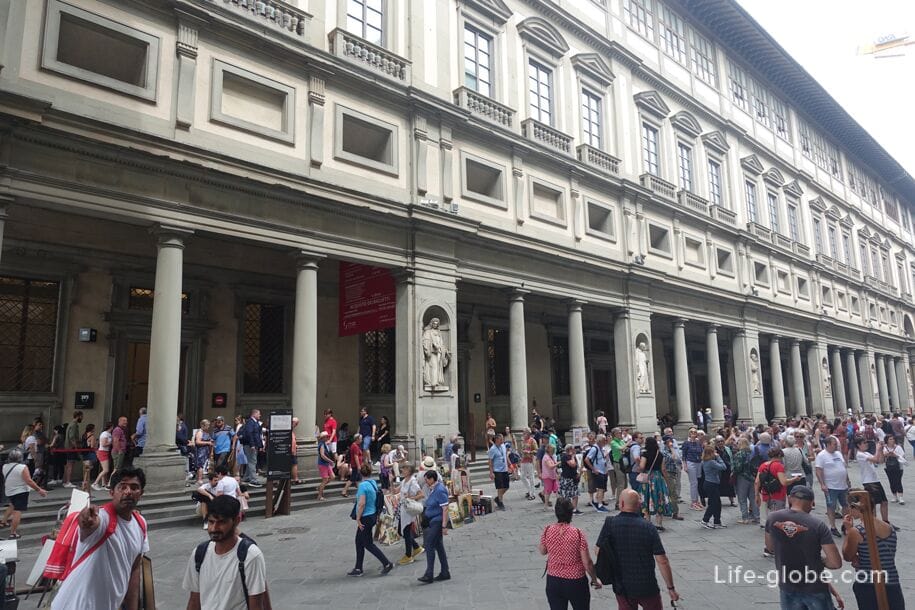
On the side of the Arno River, the upper floor of the Uffizi Gallery has a glazed terrace with views of the river and the city.

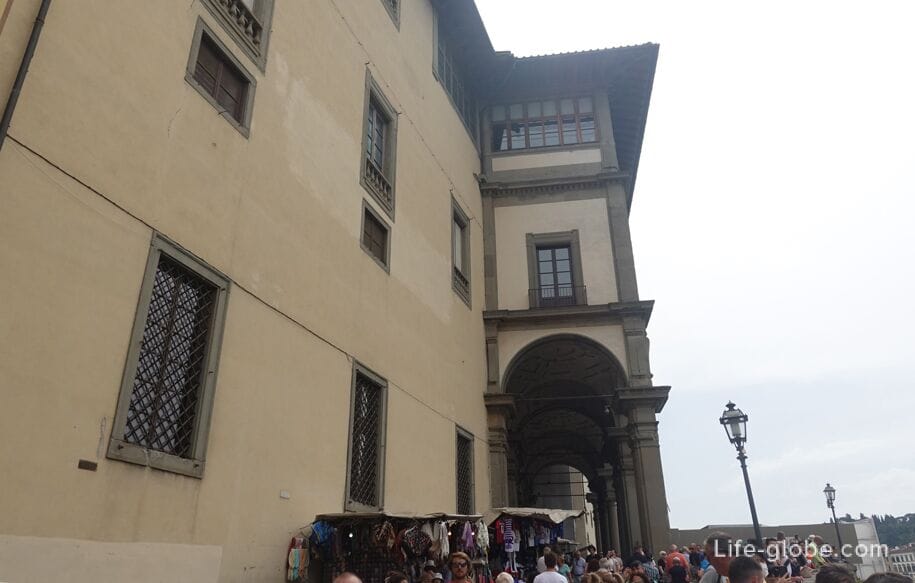
The collections of the Uffizi Gallery store unsurpassed masterpieces, including from the Medici collection, which formed the core of the museum. And also: paintings from medieval to modern, antique sculptures, miniatures, tapestries, drawings, prints and self-portraits, which are being replenished at the present time. The exhibits are located in three corridors, halls and the Grandstand hall of the Gallery.

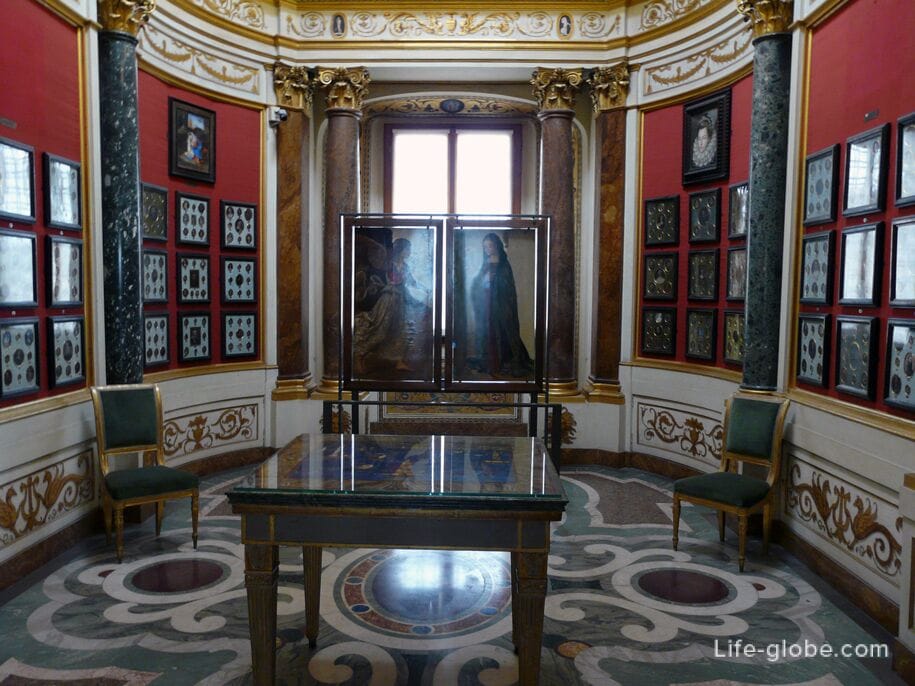
Of the most famous works
Botticelli: Spring, Birth of Venus, Slander, Botticelli, Madonna and Child with an Angel;
Leonardo da Vinci: Adoration of the Magi, Annunciation;
Raphael: Pope Leo X with Cardinals, Madonna with Goldfinch;
Michelangelo: The Holy Family (Doni Tondo);
Verokkyu: The Baptism of Christ;
Titian: Venus of Urbino, Flora;
Bronzino: Portrait of Cosimo I de' Medici in armor, Portrait of Eleanor of Toledo with her son;
Rembrandt: self-portrait in his youth (attribution is doubtful), self-portrait in the image of an old man, portrait of an old man.
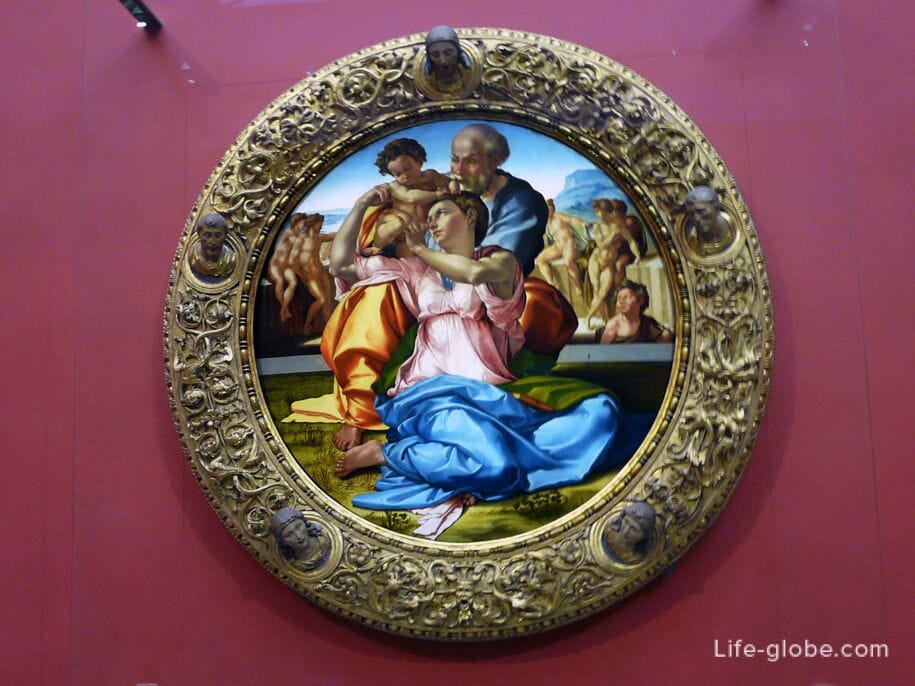
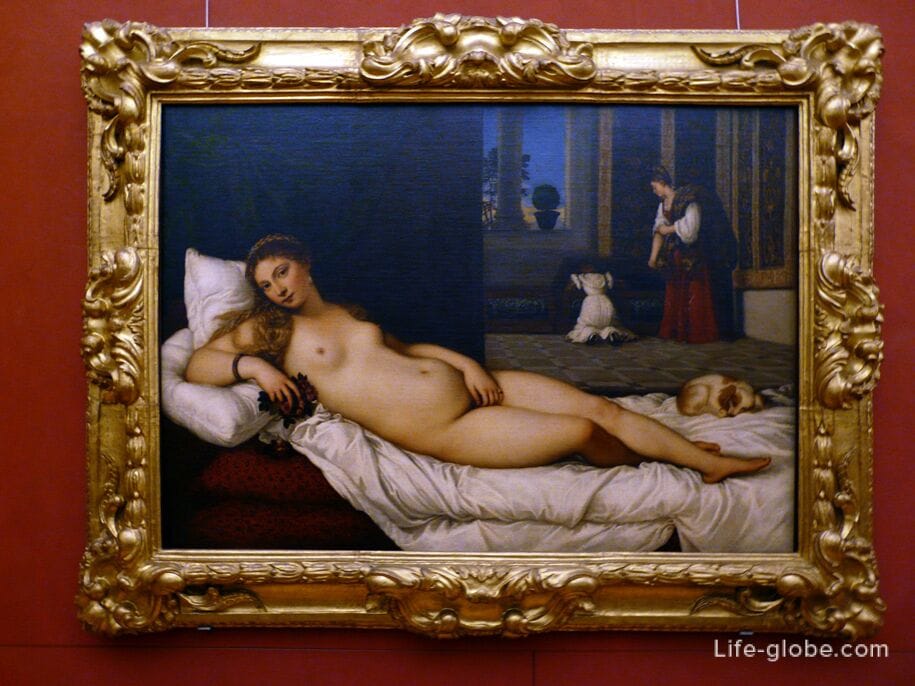
The collection also contains some ancient sculptures, such as Arrotino, Two Wrestlers, a Bust of Severus Giovanni and a statue of Venus de' Medici - a marble copy of the lost ancient Greek original, created by an unknown master in the I century BC.
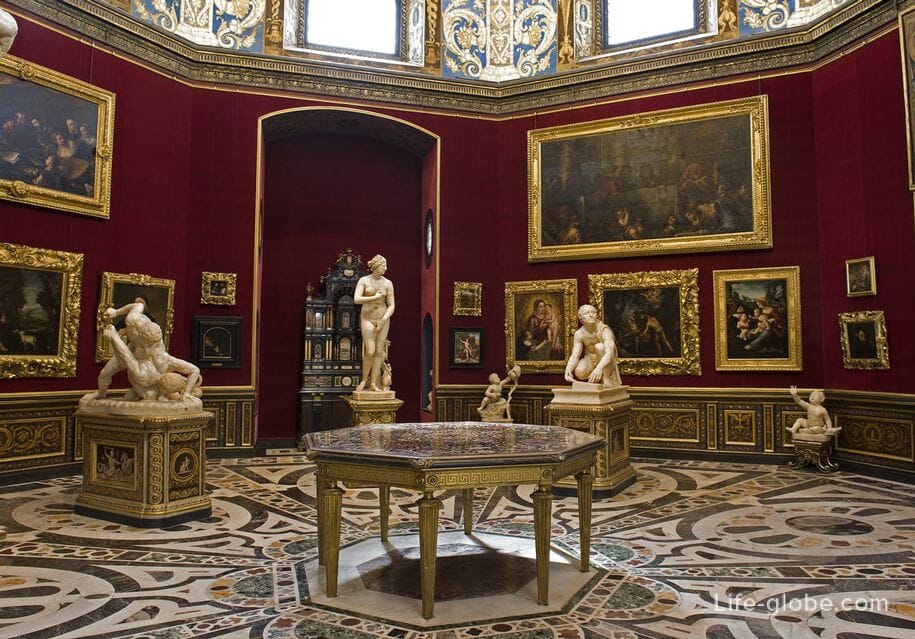
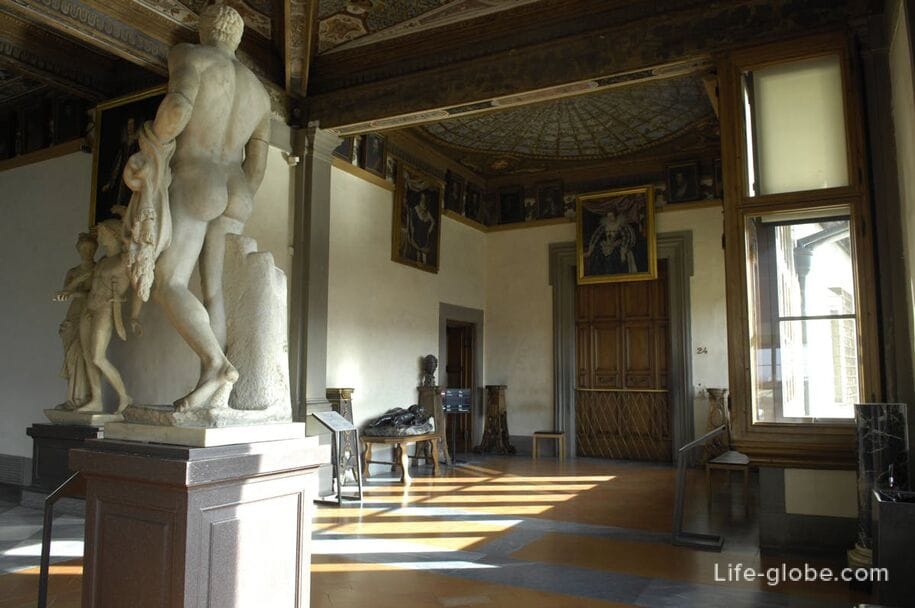
The most famous and ancient Florentine and Tuscan paintings dating back to the beginning of the 13th century are exhibited in the halls of the Uffizi. Among them are the names of Giotto, Cimabue, Duccio.

Thanks to its unsurpassed rich collection and history, the Gallery is unique as an integral part of Florentine culture, as well as one of the largest, most famous and visited museums in the world.
Attached to the Uffizi Gallery is the Vasari Corridor (Corridoio Vasariano), which is an elevated covered gallery connecting Palazzo Vecchio with Palazzo Pitti. Learn more about the Vasari Corridor...
Ponte Vecchio bridgeOn the side of the Piazza della Signoria, the Loggia dei Lanzi adjoins the Uffizi Gallery, which has valuable sculptures from the Uffizi collection.
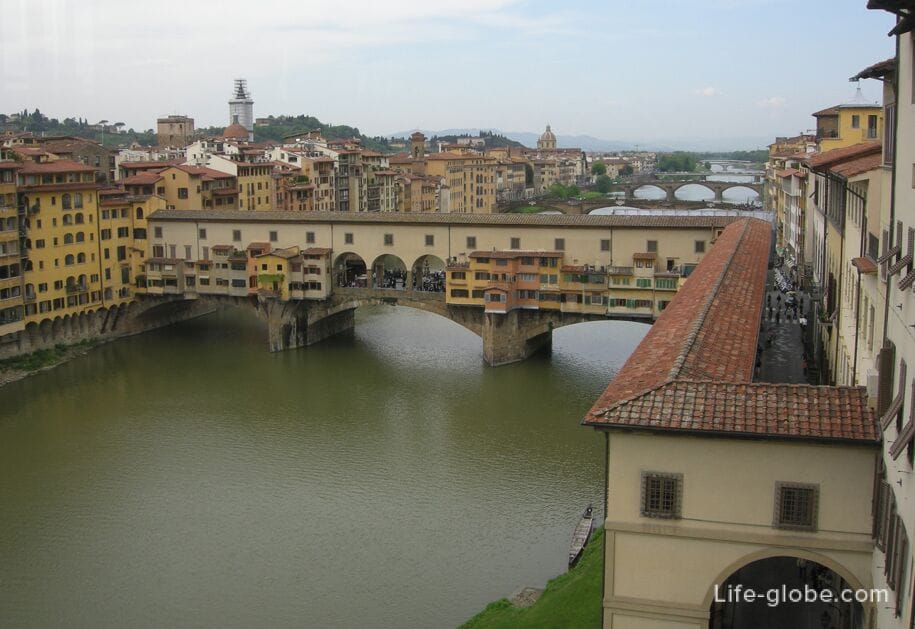
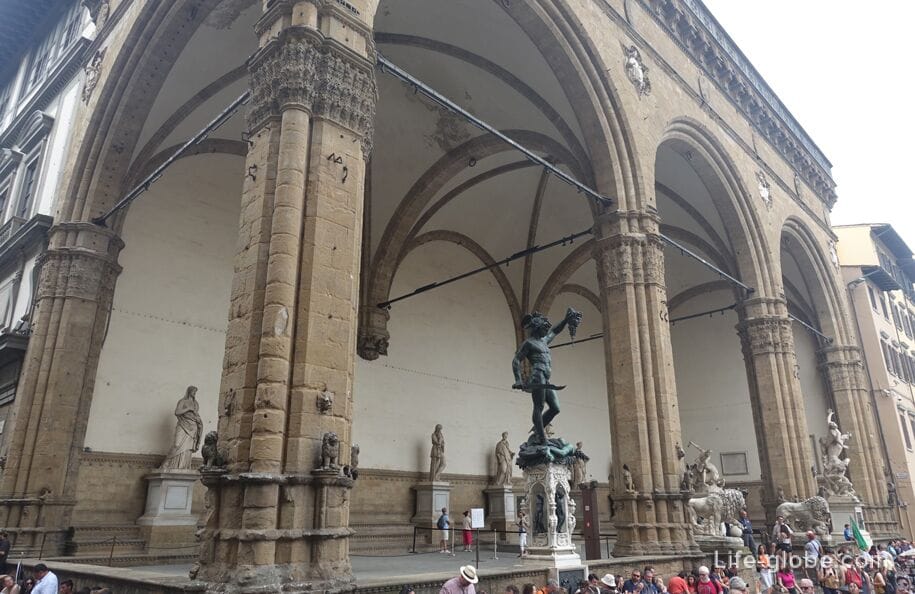
Entrance to the Uffizi Gallery is paid.
The ticket price depends on the season (the price is higher in summer, lower in winter). Tickets can be purchased at the museum's ticket offices or online in advance.
With a Uffizi ticket, you can get free access to the National Archaeological Museum and the Gem Processing Workshop Museum.
The gallery is part of the Uffizi Museum complex (Museo degli Uffizi). You can purchase a ticket only to the gallery, as well as a 5-day package ticket to the gallery, Palazzo Pitti, Boboli Gardens, the National Archaeological Museum and the Gem Processing Workshop Museum.
We recommend that you check all ticket options, as well as their cost, places of purchase, gallery opening hours and other relevant information on the official website of the Uffizi Museum: uffizi.it/gli-uffizi.
The address of the Uffizi Gallery: Piazzale degli Uffizi, 6, 50122 Firenze FI, Italy.
Coordinates of the Uffizi Gallery: 43°46'06.0"N 11°15'21.0"E (43.768333, 11.255833).
All accommodation facilities in Florence (hotels, apartments, guest houses, etc.), including in the historical center of the city and more remotely from it, can be viewed and booked here